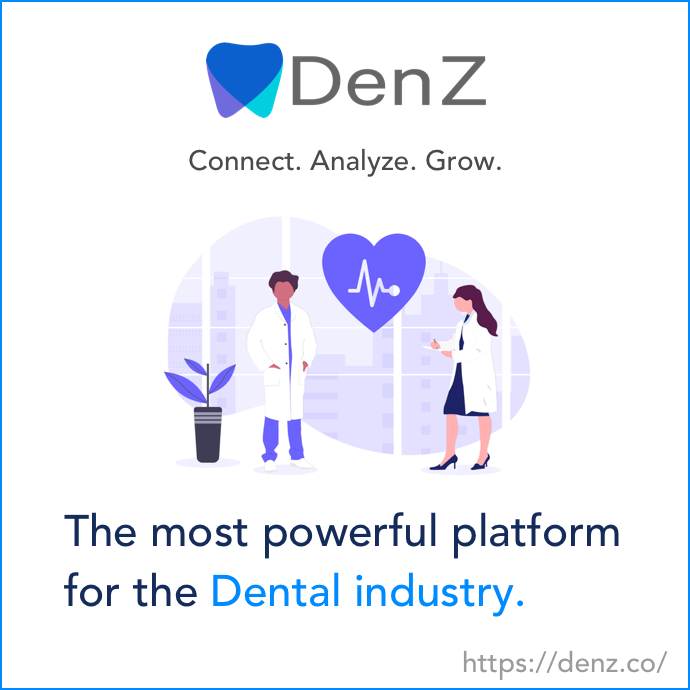Stéphan Donzé is the founder and CEO of AODocs, a cloud-native document management platform that transforms enterprise content into actionable intelligence. Unlike legacy systems limited to basic storage, AODocs combines robust document control with workflow automation, enabling businesses to streamline complex processes across industries.
From sales proposals and claims management to engineering and manufacturing, AODocs uses generative AI to extract structured data from unstructured documents—at scale.
What inspired you to start AODocs in 2012? Was there a specific problem you saw in document management that wasn’t being addressed at the time?
It came from the concept of bringing Business-to-Consumer (B2C) technologies, pioneered by Google, to the enterprise. This included cloud-based, serverless, and automatically scaling technologies that were absent in enterprise software at the time.
At the time, Google was advocating for applications to adapt to the cloud by moving away from thick clients and embracing browser-based and serverless architectures. Unlike Microsoft and Amazon at the time, Google’s stance was that cloud applications should adopt a very different architecture than on premise software. I saw an opportunity to create something new by combining old and new approaches.
Early adopters of cloud technologies in enterprises, who had adopted Gmail and Google Drive, wanted to extend these benefits beyond email and collaboration to business-critical documents. There was a lack of solutions in the market to meet this need, as traditional document management systems were on-premise with old software and architectures. This gap presented an opportunity to build something new from scratch on the right cloud architecture, working with these early adopters.
Many enterprise SaaS companies struggle with customer adoption. How did you convince major enterprises like Google or Veolia to trust AODocs early on?
Allowing customers to keep documents in their own cloud storage was a significant factor in convincing enterprises. AODocs manages documents, including sharing permissions and business processes, but the documents remain within the customer’s environment (initially Google Drive, later Azure, Google Cloud Storage, and Amazon S3). This fundamental characteristic reduced the perceived risk for customers, and made them more comfortable working with a small and young company.
Another key reason was close customer relationships. We co-built and co-developed with customers, especially in the early stages. This proximity and reactivity in fixing problems and making improvements built trust and further reduced the perception of risk.
This was ultimately what convinced companies like Google, Veolia, Ascension, Pinnacol Assurance and others to adopt us.
Looking back at your 13+ years leading AODocs, what were some of the most critical decisions that led to the company’s success?
The decision to keep customer documents in their own cloud storage is a big factor in our success and remains a key differentiating factor.
Developing the product by staying very close to customers was also critical. Everything we build is inspired by or validated through customer needs. We avoid building features without a clear customer use case.
Our ability to sort through customer requests to identify common and replicable needs that benefit the entire customer base, as opposed to very specific individual requests better addressed by professional services, is something we’ve been good at.
AODocs was born in the cloud and has now evolved into an AI-powered solution. What were some of the biggest challenges in making that transition?
It’s not so much a transition but a continuity. Being born in the cloud inherently made AODocs easy to integrate with new, cloud-based technologies, including AI.
AI models like ChatGPT and Google Gemini are cloud-based, making it natural for AODocs to interface with them and add AI capabilities to our document processing platform.
We view AODocs as a “spine” or an “assembly line” for document processes, where AI is simply a new “limb” or “module” that can be plugged in to enhance the platform. We did not foresee the specific emergence of AI in 2022, but our cloud-native architecture was designed for extensibility and integration, making the adoption of AI a natural step.
How does AODocs balance automation with human oversight, ensuring compliance and accuracy without removing human validation?
We provide the tools to customers to use AI at various steps in their document processes. The decision of how much autonomy to give AI is ultimately made by the customers on a case-by-case basis.
Customers can configure their processes for full automation, full human review, or a mix of both at any AI step. We recommend identifying easy cases suitable for full AI automation (e.g., detecting missing documents in a request), while for complex cases, AI can be used to speed up the human review, typically by generating summaries of complex documents.
Essentially, we give customers 100% control over the level of human oversight in their processes by providing the configuration tools.
AODocs is shifting its platform to focus on AI agents for document processing. What drove this decision, and how do AI agents improve upon traditional document management systems?
AI agents are a new capability that can be integrated into our existing “assembly line” for documents.
The primary driver for our excitement about AI agents is their potential to bring significant speed to specific tasks. For simple tasks like rejecting incomplete documents or automatically accepting low value, straightforward claims, AI can enable full automation.
For complex tasks, AI agents can dramatically accelerate processing by summarizing long documents, allowing humans to review key information much faster. AI excels at ingesting large amounts of information and providing concise summaries, saving human reviewers significant time. This increased speed and efficiency enhance the value of the AODocs platform.
Enterprise search remains a major challenge, with companies struggling to retrieve relevant documents. How does AODocs’ AI-powered solution tackle discoverability issues better than existing enterprise search tools?
AI chatbots represent a major improvement over traditional enterprise search by allowing users to ask questions in natural language and receive straightforward answers. However, they have a significant flaw: they cannot distinguish between valid, up-to-date documents and drafts, incomplete, or obsolete files.
We address this challenge by ensuring AI agents use only the right information to provide answers. Traditional search presents users with a list of potential matches, allowing them to identify the most relevant document (such as distinguishing between a signed contract and a draft).
In contrast, AI chatbots offer confident answers but hide the underlying search process. This creates an increased risk of using outdated or incorrect information, as users have no visibility into which documents the chatbot used to formulate its response.
Our role is to curate and guarantee that all documents in the knowledge base have been properly validated and are up-to-date. This makes them safe for AI agents to use as information sources. By ensuring AI-powered search relies only on trusted and controlled information, we significantly reduce the risk of inaccurate responses.
With generative AI becoming a key part of document processing, what specific AI technologies or models does AODocs leverage to improve accuracy and reduce manual work?
LLM models excel at transforming existing content, such as summarizing complex documents, translating text, and categorizing files. These tasks have a very low risk of hallucinations, which is why our AI usage strategically focuses on these activities.
AODocs primarily leverages AI for rephrasing, repurposing, and transforming existing text rather than creating new content. When working with the right material, generating summaries, translating documents, and categorizing content all maintain a low probability of error. Similarly, our data extraction capabilities—identifying due dates or key information from documents—remain grounded in existing content to minimize inaccuracies or “hallucinations.”
By accelerating information ingestion and supporting human reviewers, these AI capabilities often improve efficiency by a significant factor. This creates tangible value while carefully avoiding the risks associated with AI-generated content created from scratch.
There’s an additional advantage. AODocs integrates seamlessly with any LLM, giving our customers freedom to choose their preferred provider. This flexible architecture also ensures we can quickly incorporate future models as they become available, positioning our customers to benefit from the inevitable AI innovations emerging in the months and years ahead.
One of the biggest AI challenges in document processing is hallucinations or inaccurate responses. How does AODocs ensure that AI-generated insights are trustworthy and reliable?
The key to ensuring trustworthiness and reliability is grounding. We ensure that AI is used to rephrase or transform information from trusted sources.
In document processing, AI is asked to summarize or translate existing documents, minimizing the chance of hallucination. In AI chatbots or agents, the system is provided with extracts of controlled documents and is instructed to generate answers only from those extracts—the LLM must always quote the sources from which it generated its answer—without using general world knowledge or external information. This prevents AI from inventing or providing information not explicitly present in the validated documents.
With AI transforming enterprise software, where do you see AODocs in the next five years? What role will AI agents play in the future of document management?
Our core business as a document management platform will not change. Our mission remains to ensure the trustworthiness, currency, proper business process adherence, and traceability of managed information.
AI is both a new need for controlled information (to feed trustworthy data to AI chatbots) and an accelerator of business processes involving documents. AI can speed up tasks like summarizing, translating, and categorizing documents, making human users more productive.
In the next five years, we aim to provide the tools for companies to easily apply AI where it makes sense to enhance their business processes. AI agents will play a crucial role by amplifying and accelerating our core missions: providing trustworthy information, ensuring the use of the correct document versions, helping avoid human errors, and facilitating access to business processes. We want to help companies use AI effectively and strategically to boost productivity.
Thank you for the great interview, readers who wish to learn more should visit AODocs.
Credit: Source link









































